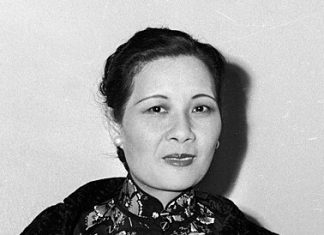The Button Placement Tradition: Unraveling the Historical Significance
The placement of buttons on men’s and women’s shirts is a fascinating element of fashion that has deep historical roots. This seemingly straightforward difference reflects a tapestry of social customs, gender roles, and even practical considerations that have evolved over the centuries. In this article, we will delve into the various factors contributing to the button placement distinction, exploring how these practices have shaped contemporary attire. Through examining history, societal norms, and practical functions, we aim to unveil the intricate narratives embedded in every buttoned garment.
The Gendered Nature of Clothing
Historically, clothing has often served as a societal divider, marking distinctions between genders. The tradition of women’s shirts buttoning on the left while men’s shirts button on the right is not merely a whimsical fashion choice; it is a reflection of the roles and expectations placed on men and women throughout history. In the 18th and 19th centuries, women’s fashion was intricately tied to notions of femininity, which were heavily influenced by class and the presence of domestic help. Women were often seen as the bearers of domestic virtue, and their attire was designed to emphasize their status and femininity. In contrast, men’s clothing was often more utilitarian, reflecting their roles as providers and protectors.
Domestic Assistance and Button Placement
During the late 1700s and early 1800s, the upper class typically employed maids who assisted women with dressing. These maids, predominantly right-handed, found it more practical to button women’s garments on the left side while facing their employer.
This convenient arrangement not only eased the dressing process but also reinforced social hierarchies, as it signified wealth and the ability to afford help in daily tasks.
The act of being dressed by someone else added an element of performance to femininity, where the manner in which a garment was worn became a reflection of social standing. Over time, this practice solidified into a lasting fashion norm, symbolizing not just affluence, but also female elegance and grace.
The left-side buttoning became a marker of femininity, subtly promoting the idea that women required assistance and were thus positioned in a more dependent role.
The Practicality of Men’s Clothing
Conversely, the design of men’s shirts evolved from practical needs. During earlier centuries, men were often required to carry weapons—typically on their left side—to ensure quick access with their dominant right hand.
As a result, shirts designed with buttons on the right not only facilitated ease of removal but also catered to the need for rapid motion in potentially dangerous situations. This button placement became emblematic of masculine identity and readiness, incorporating functionality into the realm of fashion.
Men’s clothing, therefore, did not just serve aesthetic purposes; it was designed for action and efficiency. The right-side buttoning became a practical solution to the realities of life at the time, from military engagements to everyday labor.
Military Influence and the Masculine Identity
The years of military influence further cemented the button placement differences. As the military became a more prominent aspect of society, the necessity for practicality in clothing became paramount. Uniforms were designed for functionality, allowing soldiers to move swiftly and efficiently.
Shirts that could be unfastened quickly became a norm for men, serving as a reflection of their readiness and adaptability. This trend not only reinforced the masculine identity associated with strength and preparedness but also subtly influenced civilian fashion choices, merging functionality with style in an enduring manner.
The military’s impact on fashion cannot be understated; it introduced a new level of discipline and order to men’s attire, contributing to a cultural narrative that valorized strength, duty, and the ability to respond to any situation with immediacy.
Contemporary Relevance
In modern times, the distinction between button placements may seem trivial to many. However, it serves as a subtle yet powerful reminder of how historical narratives shape our lives, even in the seemingly mundane aspects of daily attire.
Although few people today carry swords or rely on maids to dress them, the button difference persists as an enduring element of gendered fashion. It reflects the complex interplay of history, social class, and gender roles that continue to influence our choices in clothing.
In the age of modern fashion, where clothing can often be seen as unisex or gender-neutral, the legacy of button placement still evokes questions about identity and societal norms.
Designers today experiment with these conventions, challenging traditional formats and pushing boundaries, but the historical implications of button placement remain embedded in our consciousness.
The Role of Fashion Designers
Fashion designers are increasingly aware of the historical significance of clothing choices, including button placements. Notable designers such as Yves Saint Laurent and Chanel have played pivotal roles in redefining gender norms in fashion.
In recent decades, there has been a push towards deconstructing traditional gender roles, which has led to a more fluid understanding of fashion. Some contemporary menswear even incorporates elements traditionally associated with women’s fashion, including button placements.
For instance, designers may create unisex shirts that challenge the historical norms by placing buttons in unconventional locations, thus subverting established gendered expectations. This shift not only reflects changing societal attitudes but also showcases how fashion can be a medium for dialogue about gender and identity.
Conclusion: The Legacy of Button Placement
As we navigate the world of fashion, it is insightful to remember that every detail tells a story. The difference in button placement between men’s and women’s shirts is a testament to the rich tapestry of history that informs contemporary clothing styles.
Understanding this can provide us with a deeper appreciation for our garments and the societal norms they reflect. As we dress each day, we carry with us not just our personal choices but also the weight of history, class, and gender—woven into the very fabric of our attire.
As we embrace the future of fashion, recognizing these historical narratives will empower us to make conscious choices that celebrate individuality while also acknowledging the legacies of those who have come before us.

















